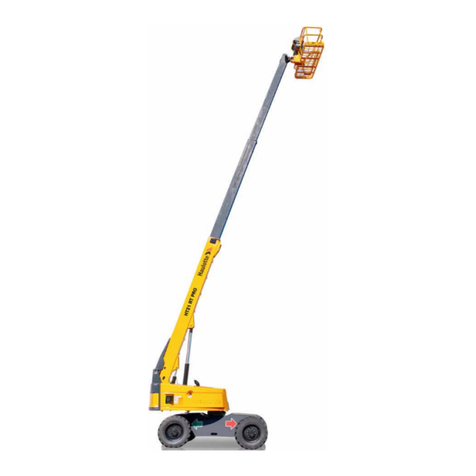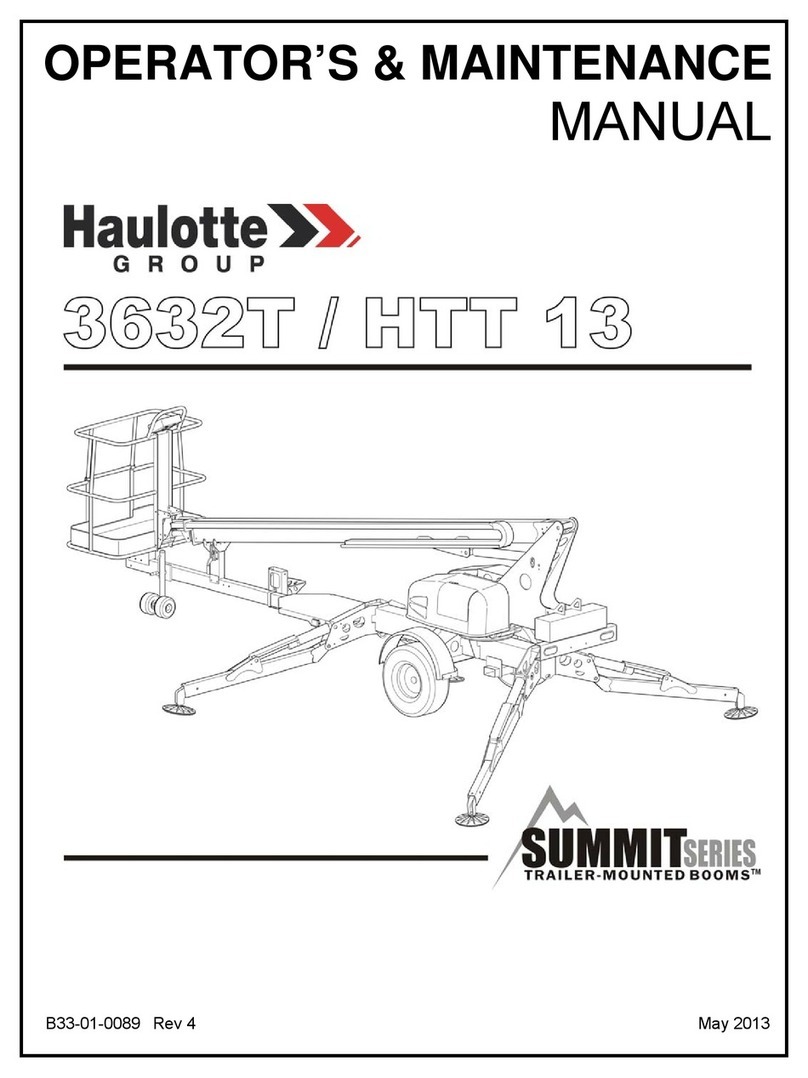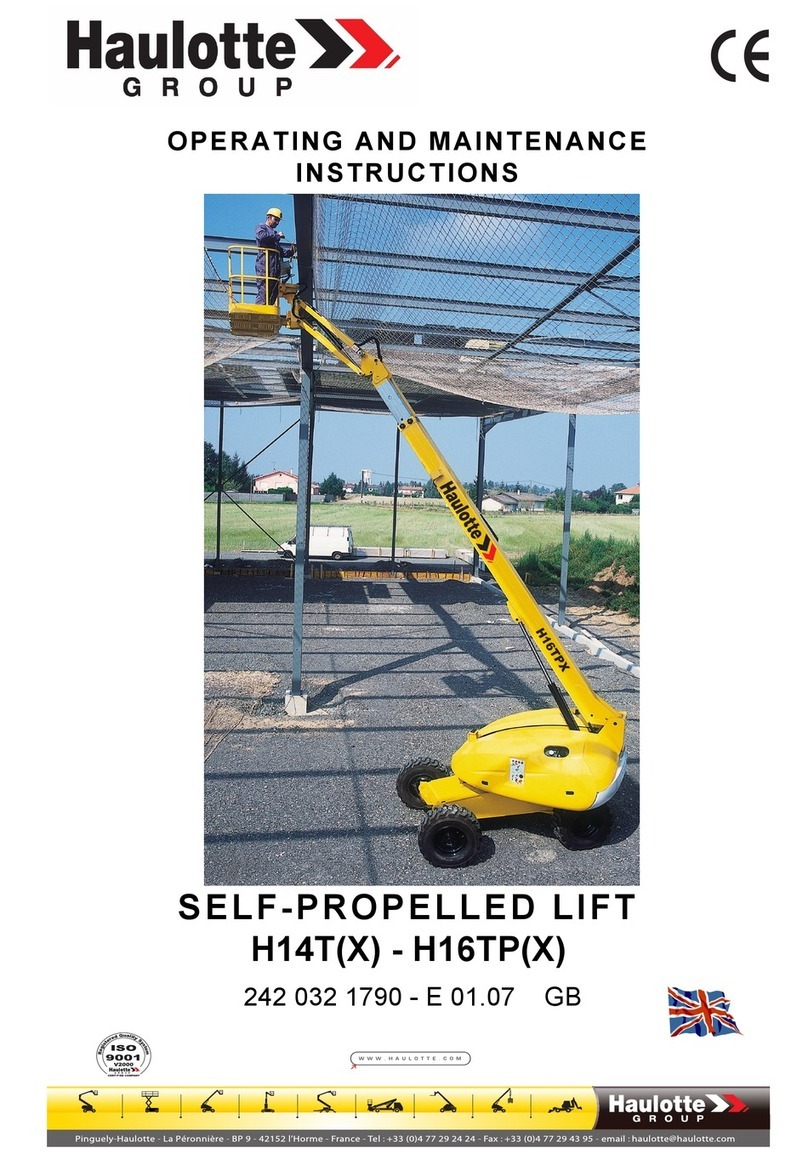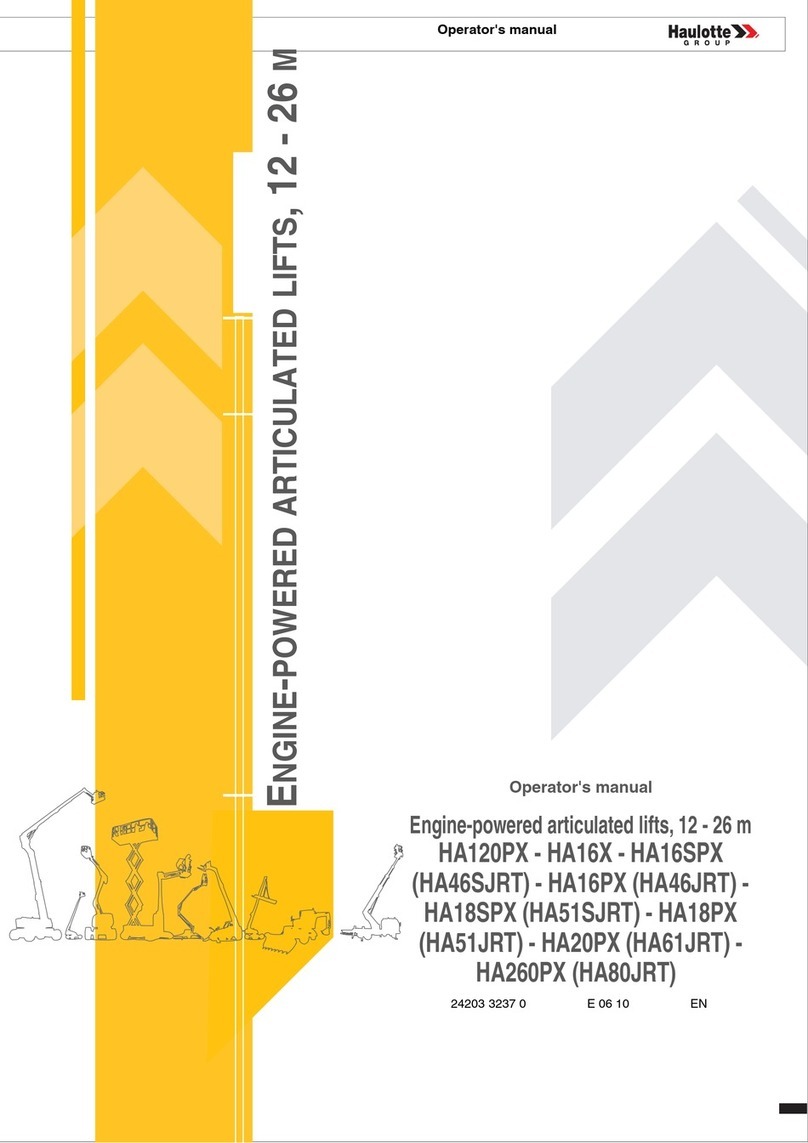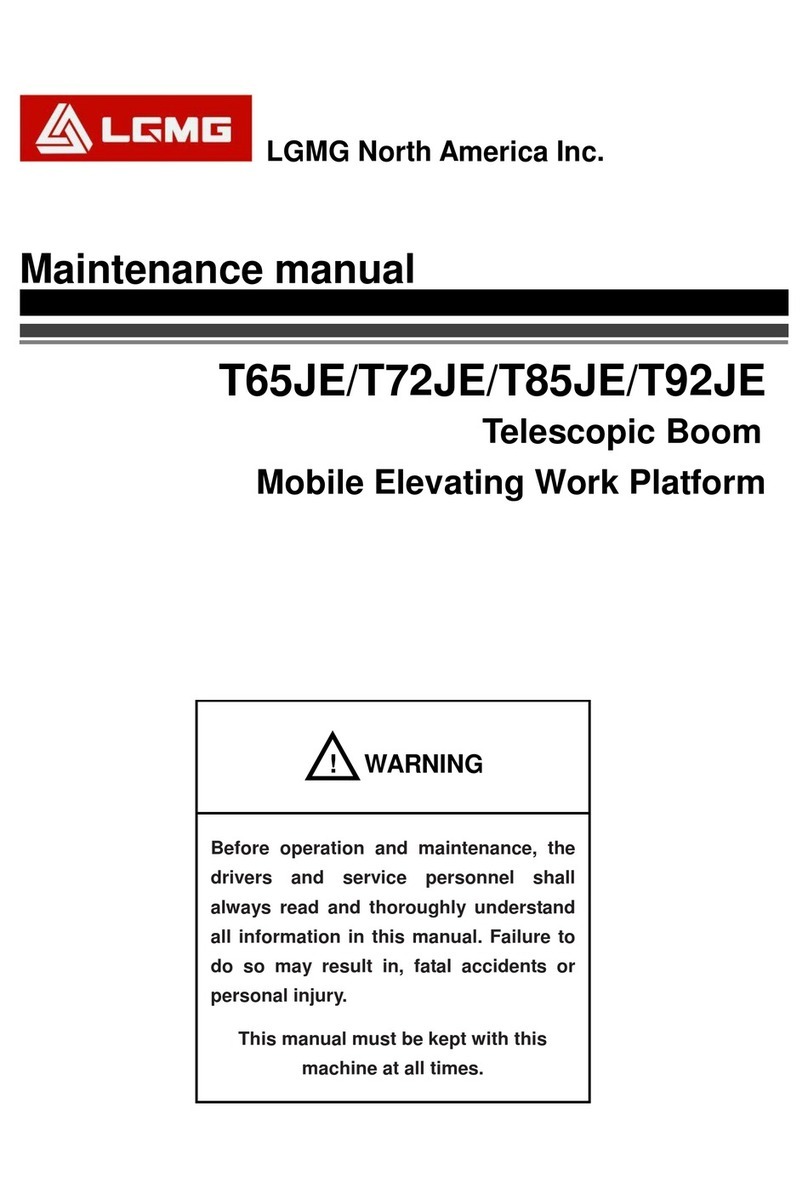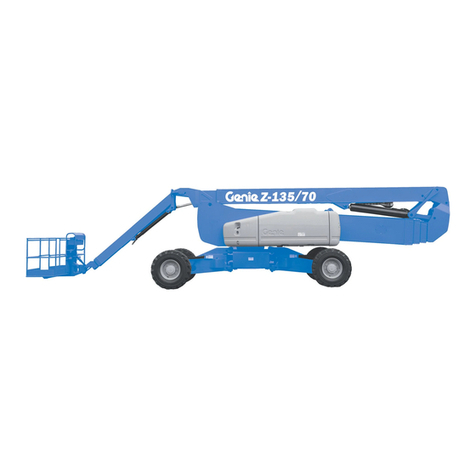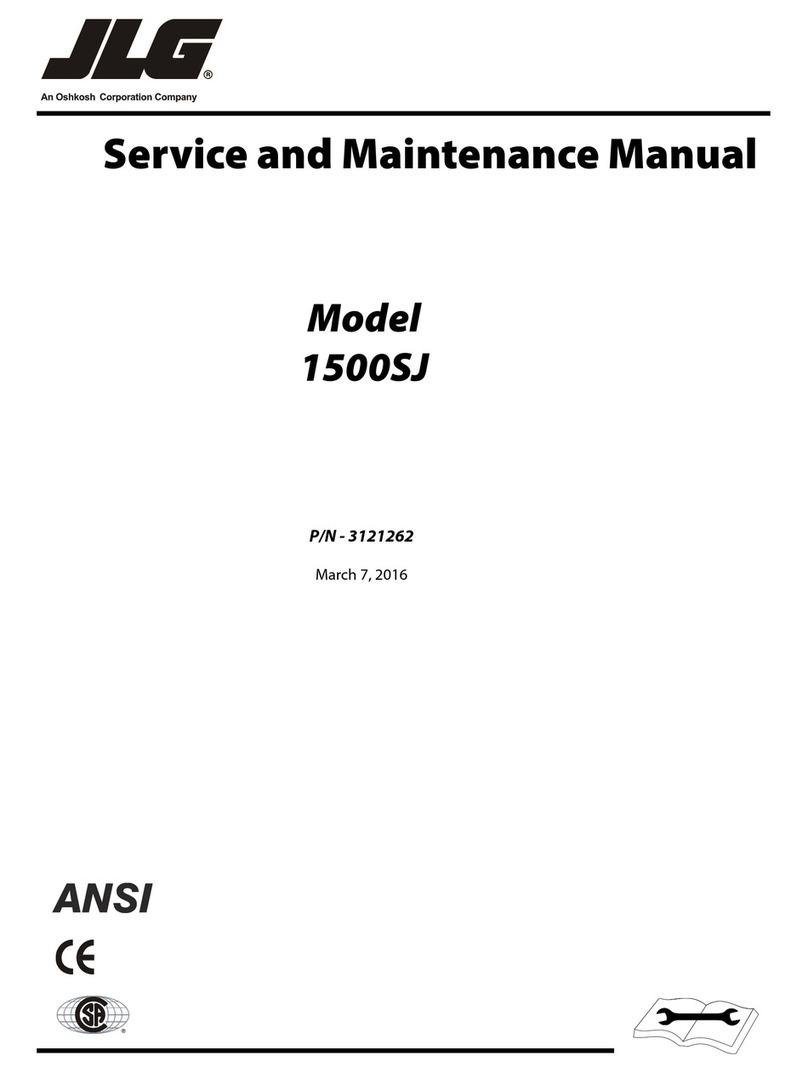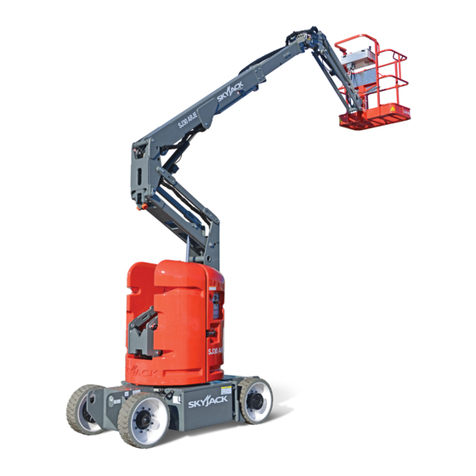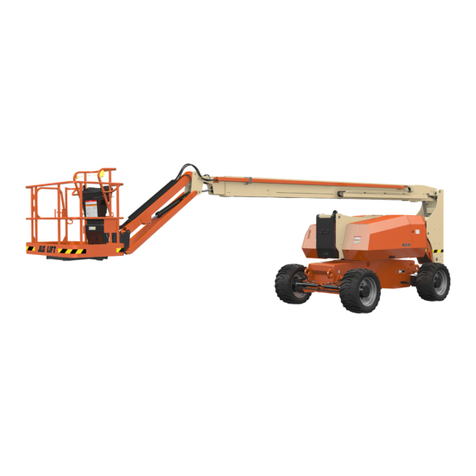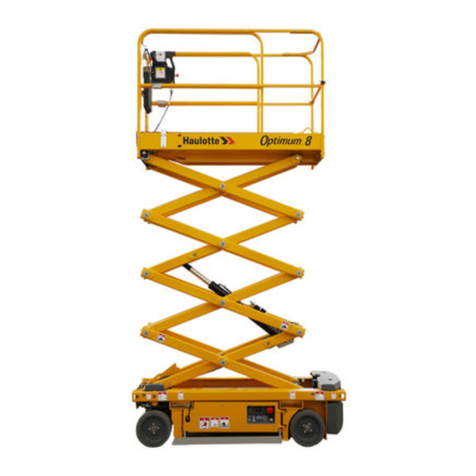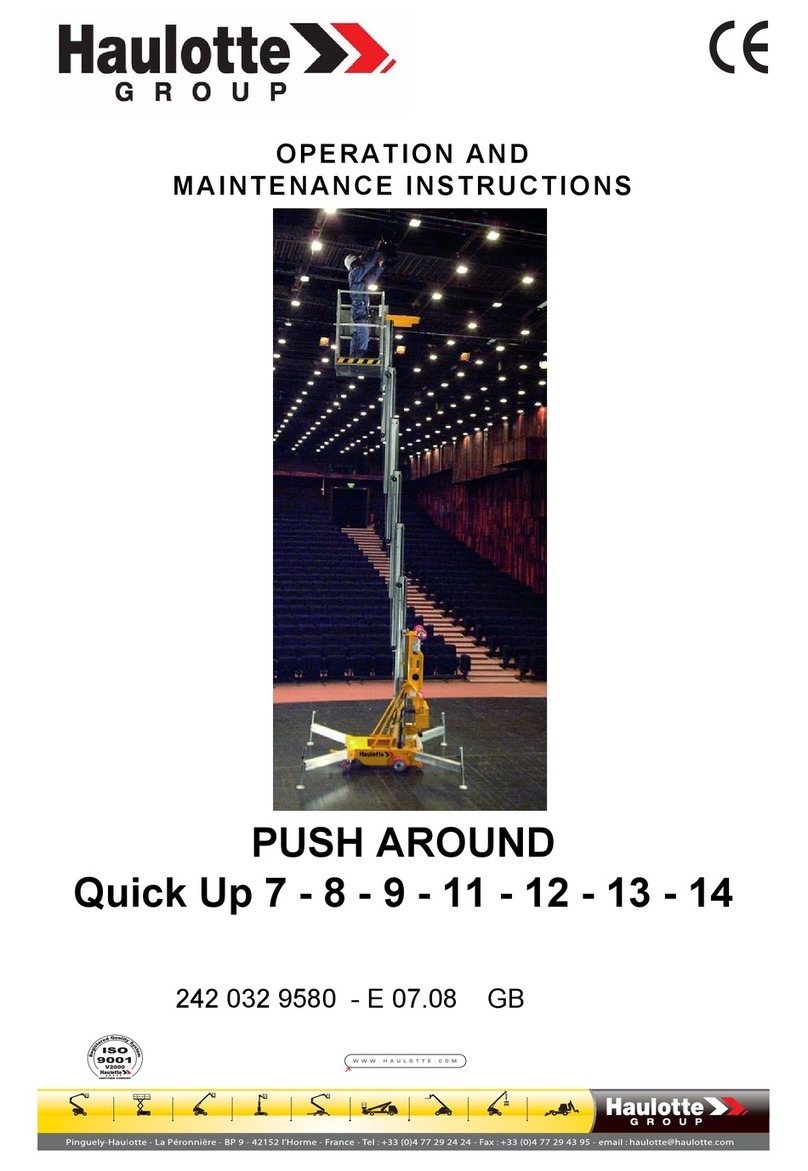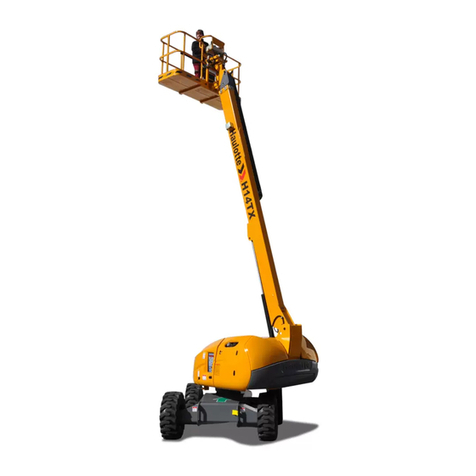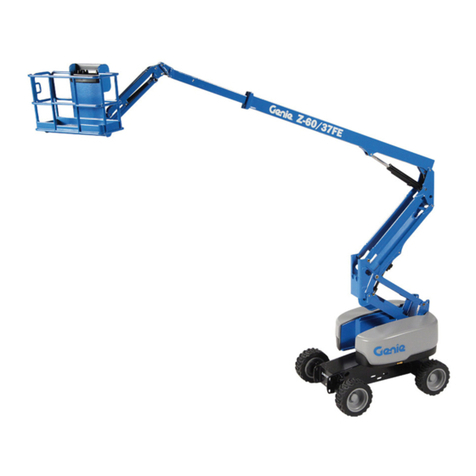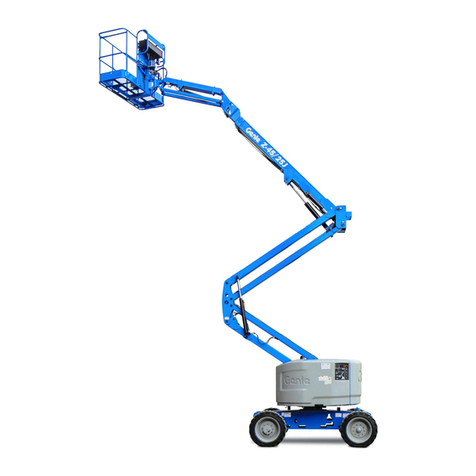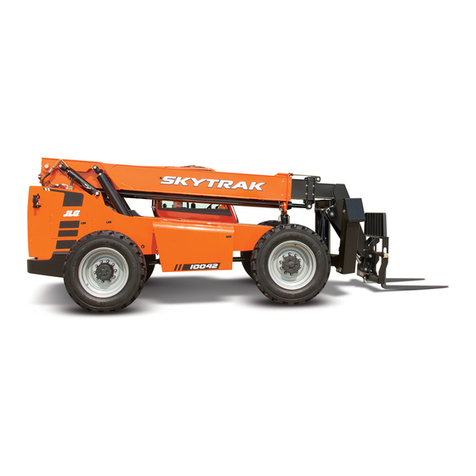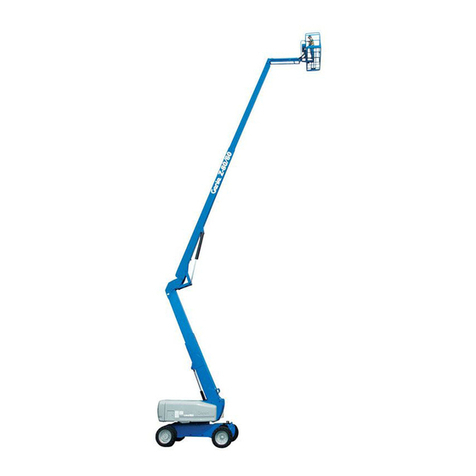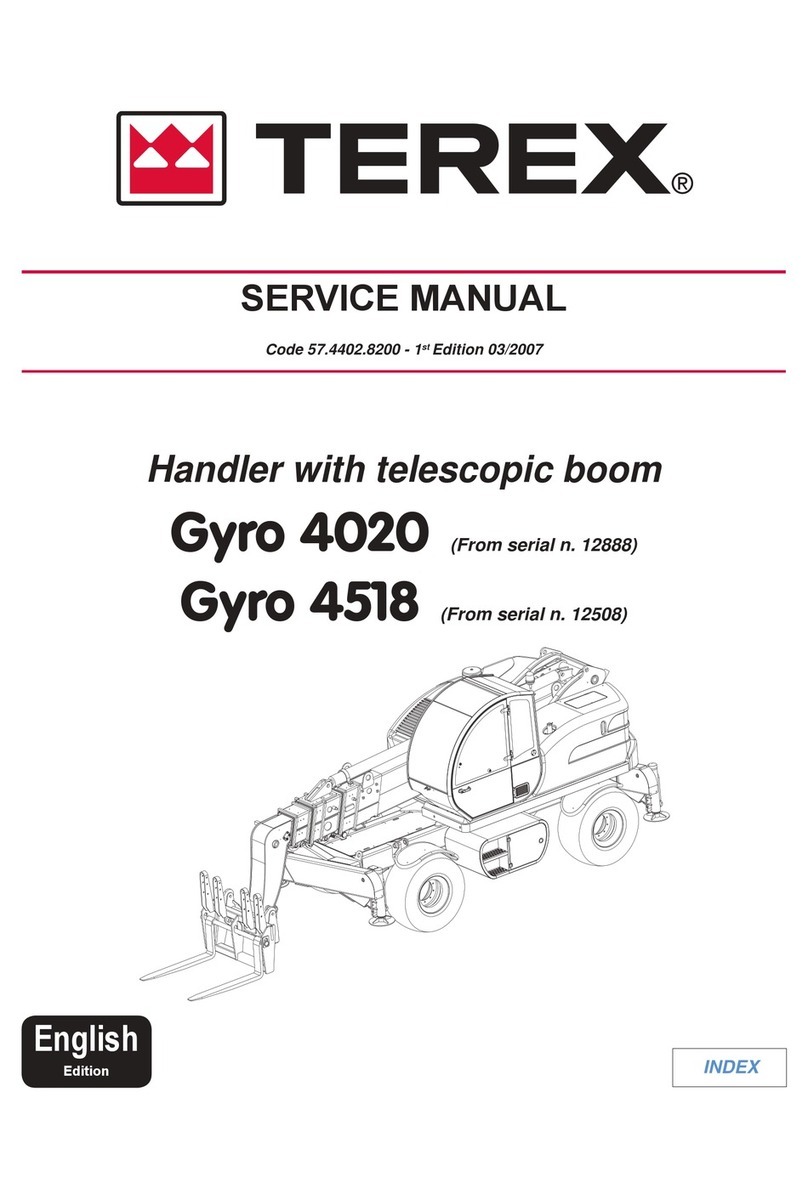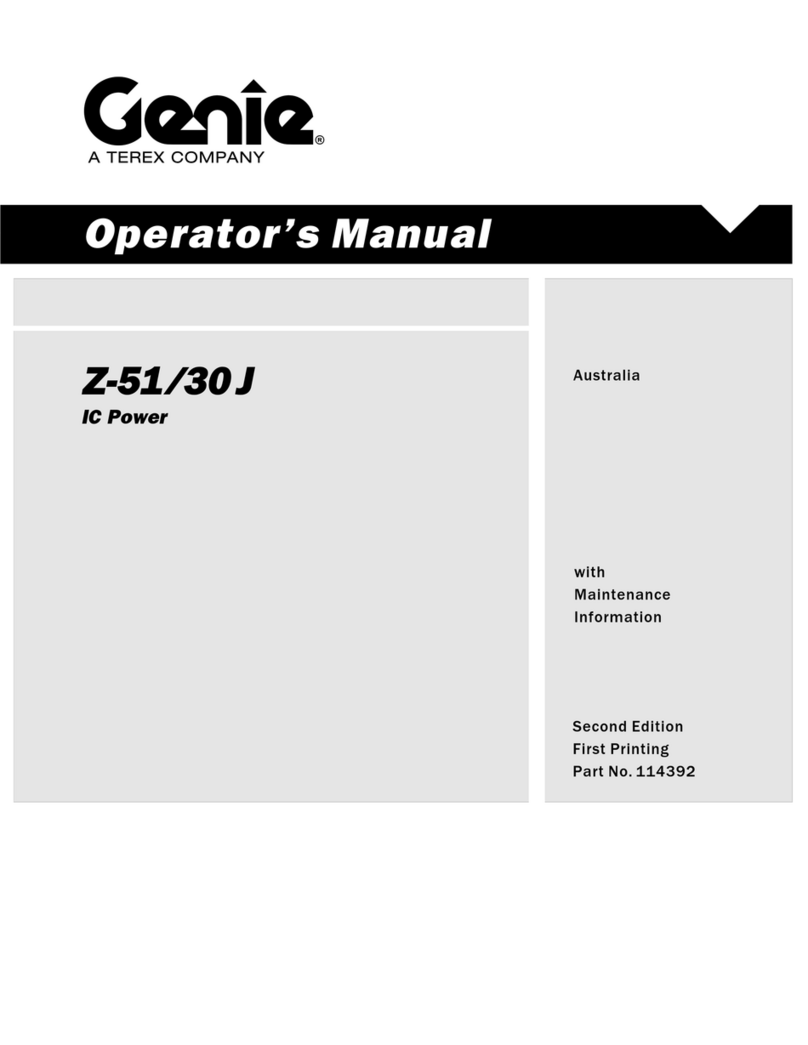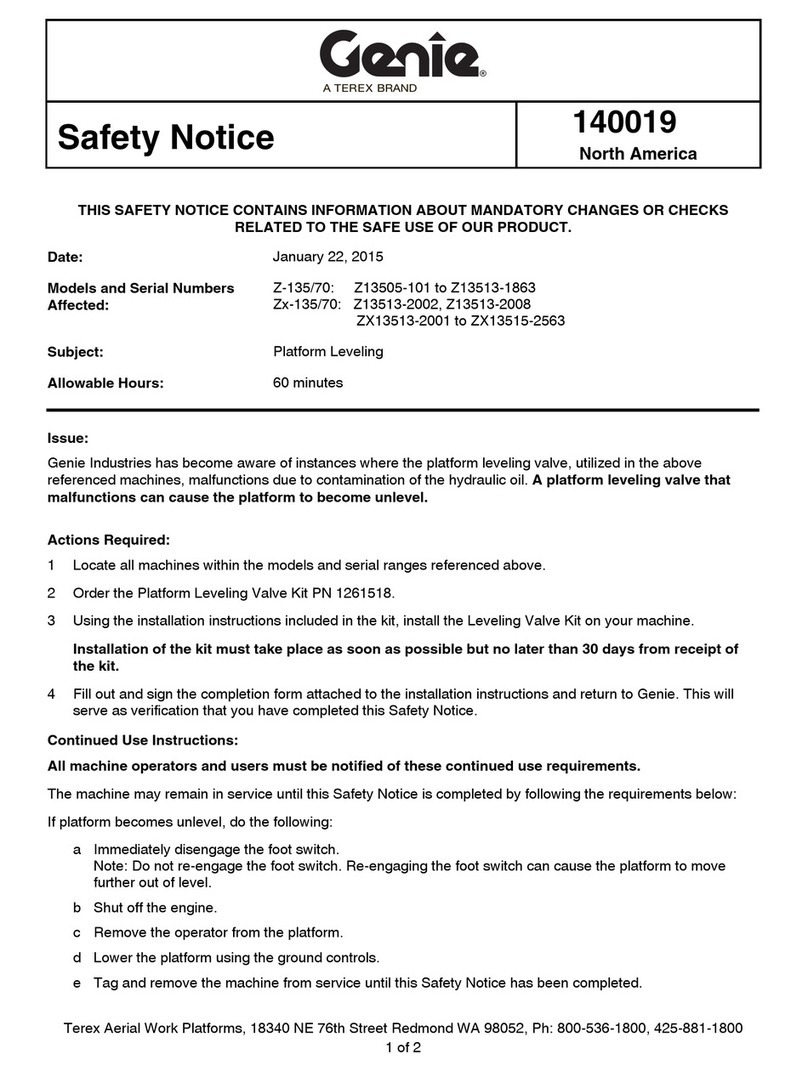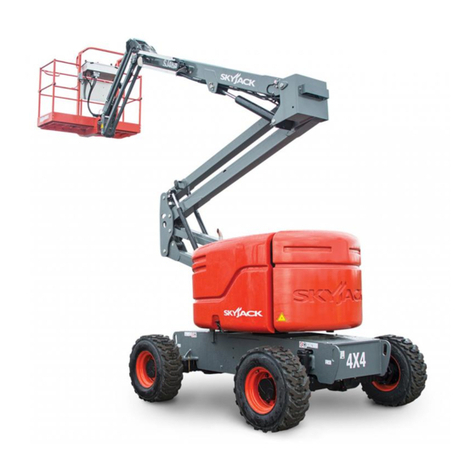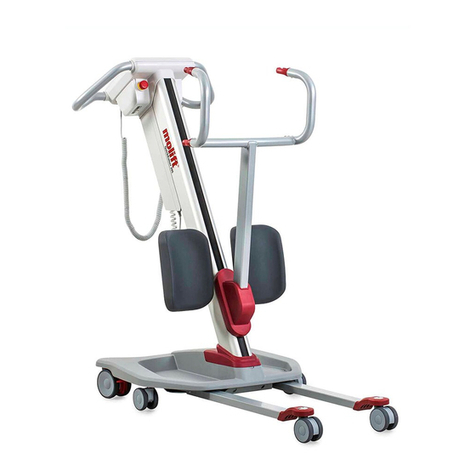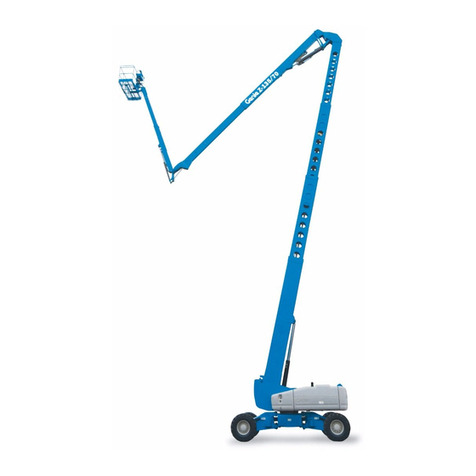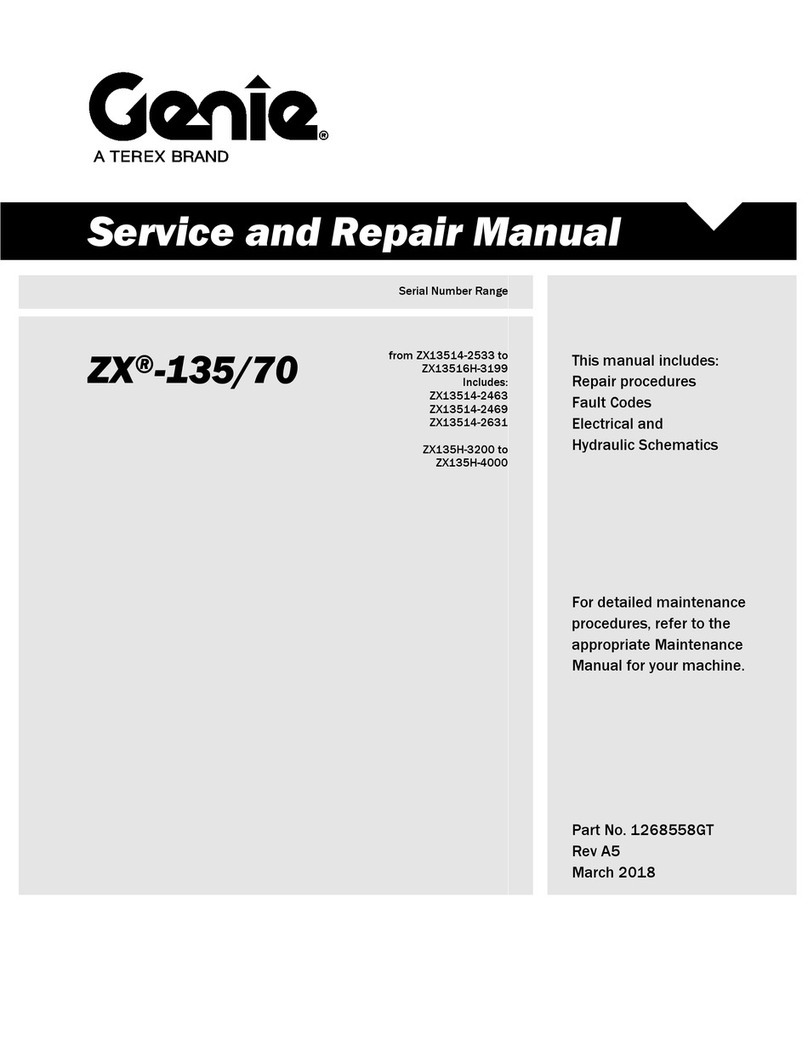
HAULOTTE GROUP 1 SAFETY
3
TABLE OF CONTENTS
1 SAFETY ............................................................................................................................................ 5
LEGEND: SAFETY ADVISORIES....................................................................................................5
BEFORE OPERATION......................................................................................................................6
DURING OPERATION......................................................................................................................7
FALL PROTECTION .........................................................................................................................9
MANUAL FORCE..............................................................................................................................9
WIND LOADING..............................................................................................................................10
EXPLOSION HAZARD....................................................................................................................10
MAINTENANCE ..............................................................................................................................11
2 SPECIFICATIONS .......................................................................................................................... 13
RANGE OF MOTION ......................................................................................................................13
SPECIFICATIONS...........................................................................................................................14
WARRANTY - NEW PRODUCT; HAULOTTE NORTH AMERICA .................................................16
DAMAGED EQUIPMENT POLICY..................................................................................................18
3 OPERATION ................................................................................................................................... 19
GROUND CONTROL STATION .....................................................................................................22
PLATFORM CONTROL STATION..................................................................................................24
NORMAL OPERATING PROCEDURE...........................................................................................26
MANUAL BOOM OPERATION .......................................................................................................30
AERIAL WORK PLATFORM TRANSPORT....................................................................................32
4 EQUIPMENT MAINTENANCE........................................................................................................37
BATTERY RECHARGE...................................................................................................................38
DAILY SERVICE CHECKS .............................................................................................................40
WEEKLY SERVICE CHECKS.........................................................................................................43
MONTHLY SERVICE CHECKS......................................................................................................44
ADDITIONAL SERVICE INFORMATION........................................................................................45
TROUBLESHOOTING ....................................................................................................................46
ERROR CODE DEFINITIONS – CONTROLS ................................................................................47
ERROR CODE DEFINITIONS – MOTOR CONTROLLER .............................................................58
5 DECAL REPLACEMENT ................................................................................................................ 61
DECAL REPLACEMENT – DECAL KIT - ANSI ............................................................................62
DECALREPLACEMENT–IDENTIFICATIONPLATES&OPTIONALEQUIPMENTANSI......................64
DECAL REPLACEMENT – DECAL KIT - CE..................................................................................66
DECALREPLACEMENT–IDENTIFICATIONPLATES&OPTIONALEQUIPMENTCE.........................68
6 OPTIONAL EQUIPMENT................................................................................................................. 71
DRIVE AND SET.............................................................................................................................72
MATERIAL LIFT HOOK...................................................................................................................76
LOAD CELL CALIBRATION PROCEDURE....................................................................................79
PLATFORM ROTATOR ..................................................................................................................80
7 MATERIAL SAFETY ....................................................................................................................... 81
8 ANSI REPRINT ............................................................................................................................... 91
INSPECTION FORM FOR HAULOTTE GROUP AERIAL WORK PLATFORMS............................... 99


